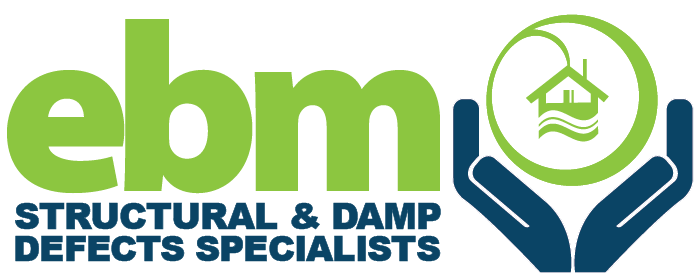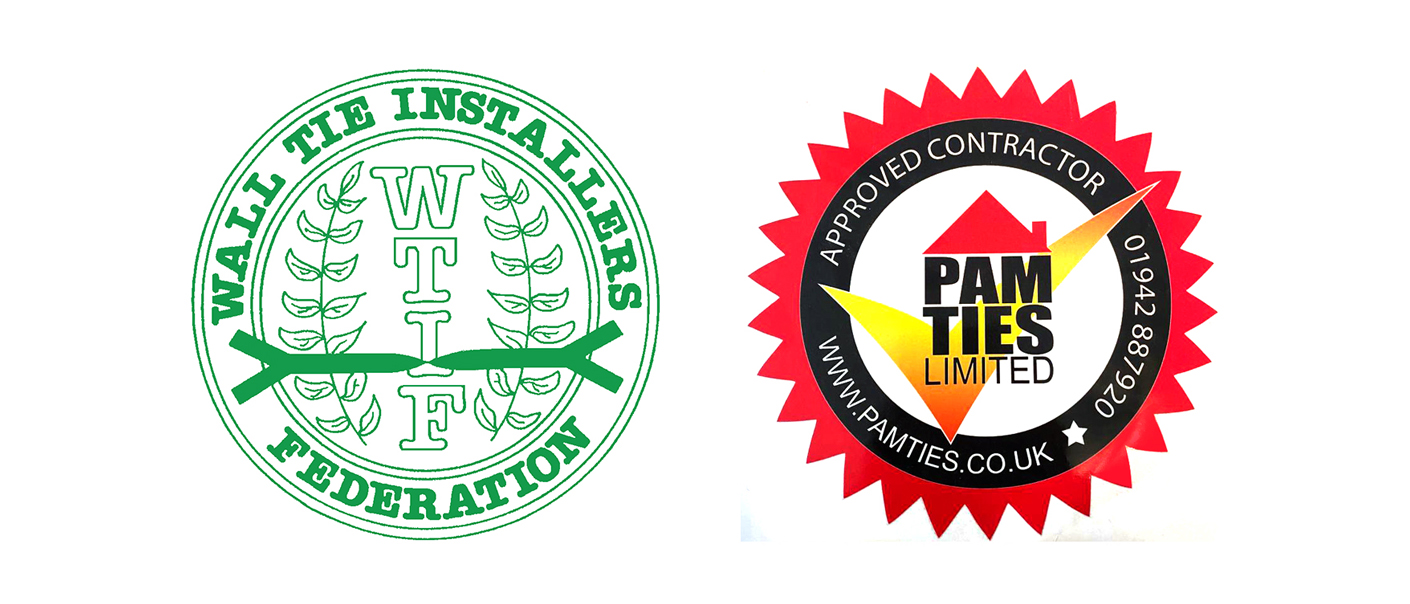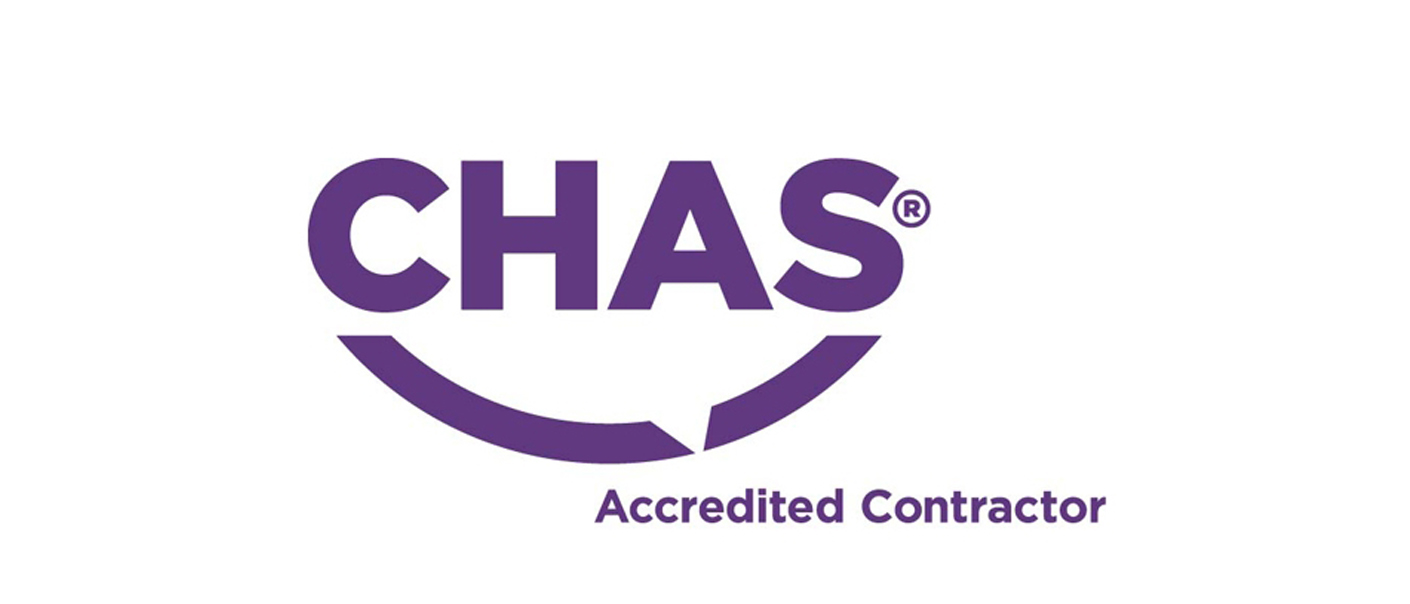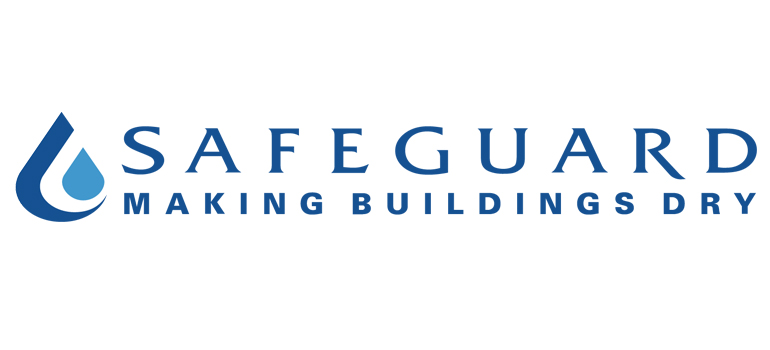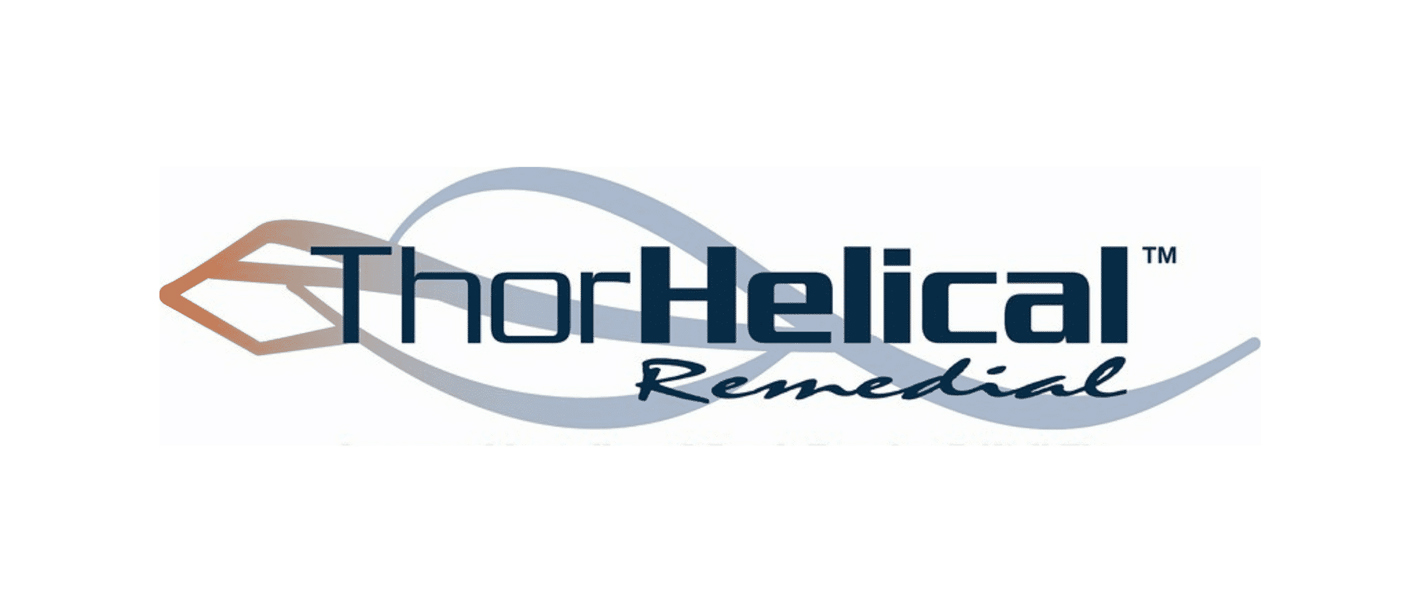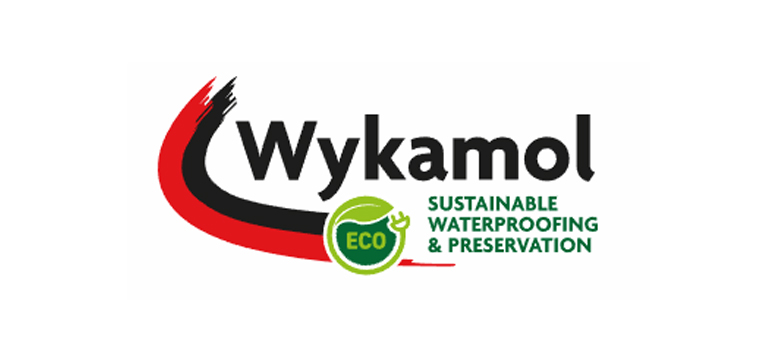Helical Bed Joint & Defected Lintel Reinforcement

Helical Bed Joint Reinforcement
Helical bars are stainless steel bed joint reinforcement rods used for strengthening and stabilising masonry walls. They can be used during construction but are most often used in remedial applications.
Thor Helical bars are bonded into slots cut into the wall to strap or stitch cracked brickwork. They can be used to create deep masonry beams that reinforce panels of masonry and transfer structural loads from weakened zones to areas having firm support. The bars are ideal for the structural repair and strengthening of sagging or cracked brickwork, such as may be typically caused by:
Lintel Deflection or Arch Failure
It is common to find a flat or shallow arch used for carrying brickwork above an opening. The original timber frame often acts as a fortuitous lintel that adds support the arch. Such arches are sensitive to cracking due to small movements of buttressing masonry. Additionally replacement of the window frame with a uPVC unit can undermine the support and provoke masonry arch failure.
Thermal or Moisture Variations
Cracks can appear when the differing moisture or thermal movements result in tensile stresses that exceed the tensile strength of the materials used to build the wall. Helical bars are manufactured from round stainless steel wire, which is passed through a series of profiled rolls to progressively alter its shape in cross-section. The shaped wire is then forced through a twisting die to deliver a patented precision-engineered helical reinforcement bar with unique torsional elastic yield characteristics and a tensile strength that is double that of standard stainless steel.
Foundation Movement
It is not uncommon for a foundation pile to slip or a portion of a strip foundation to fail. This removes support part-way along the length of the wall with the result that a vertical crack is generated in the masonry wall over the subsided foundation.
Retrofit bed joint reinforcement may be used for:
- Strapping fractured masonry, a series of helical bars can stitch the cracks to reinstate the structural integrity of the wall.
- Forming deep masonry beams to span openings, or areas of local subsidence, the bars are used in pairs, each pair forming the top or bottom chord of the beam.
The helical bars have a deep and continuous helix that provides an excellent key for chemical bonding agents. When used with WHO-60 polymer modified grout the bed joint reinforcement redistributes loads and enhances the tensile, shear and flexural capacity of the masonry panel. CE Mark testing and the BRE report on masonry beams formed with retrofitted Thor Helical bars bear testament to the effectiveness of this versatile masonry reinforcement system.
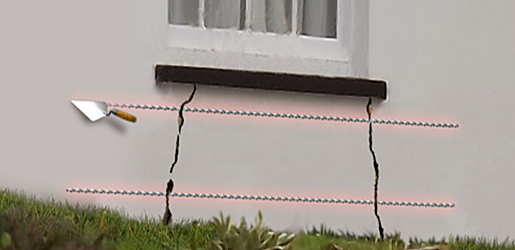
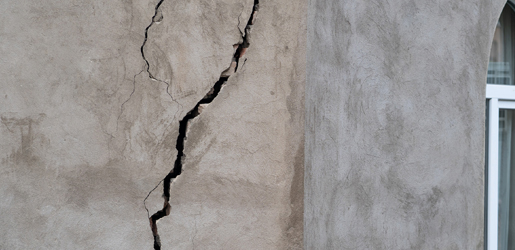
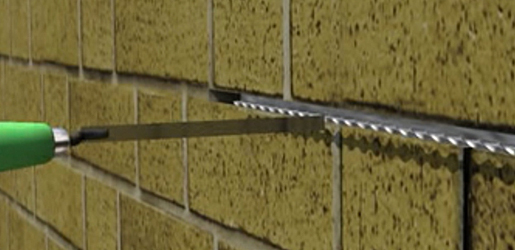
Stitching Cracked Walls
Thor Helical bars are highly deformed reinforcement rods generally used to stitch cracked walls. The crack stitching process delivers a practical and durable masonry repair by introducing fully concealed tension straps into the wall, strengthening fractured masonry and brickwork. Cracks in house walls aren’t just unsightly; they can be warning signs of structural problems. Brickwork can crack when a build-up of stress in a wall is more than can be resisted by the masonry. Stress may result from regular thermal or moisture movement or support failure. In either case, once the brick, block or mortar cracks, the pressure is relieved. However, the fractures may compromise the wall’s ability to act as a restrained composite structural unit, leaving it weak and vulnerable to further damage. Horizontally strapping or stitching the masonry at regular intervals will strengthen cracked brickwork and enhance the walls’ tensile, shear and flexural capacity. Extending the stitching bars 500mm beyond the crack on each side will allow them to disperse loads and relieve point-loaded stress. It is crucial to deeply fill stepped or vertical fractures to restore compressive strength and help weatherproof the area.
WHO-60, a polymer-modified and non-shrink thixotropic cement-based grout, bonds the twisted bars into slots pre-cut across the fracture to strap the brickwork on either side. The bar’s deep-trough helix shape enhances the bond between the grout and the twisted stainless steel reinforcing rod.
The bars are available in different diameters for stitching cracked walls. Each size conforms to BS EN 846-4:2002 ‘Methods of Test for Ancillary Components for Masonry – Part 4: Determination of load capacity and load-deflection characteristics of straps’. BS EN 845-1:2013 National Annex NA states that the strap should provide equivalent performance to 30 mm x 5 mm tension-straps and the fitted straps should have a tensile load capacity of at least 8kN
How It Works
Here’s a short video explaining the process of EBM Wales can stitch a cracked wall using the industry-leading Helical Bars
What makes the Thor Helical stitching bars a cut above the rest?
- Fully concealed tension straps for stitching cracked walls
- Patented manufacturing process delivers consistency in tensile strength (1050-1200N/mm² range)
- Highly deformed helical bar combines with WHO-60 grout to produce an excellent bond within the wall
- Enhances the tensile, shear and flexural capacity of masonry walls
- Permits a degree of torsional yield to accommodate natural building movement.
- Progressively accumulates building loads, dispersing them back into the structure to strengthen cracked walls and provide resilience against further cracking.
- Quick, easy and durable
- Conforms to conditions for UKCA and CE marking according to BS EN 845-1 2013
- Mean tensile strength greater than 8kN
Stitching Cracks At A Corner
Thor Helical reinforcement bars can be pre-bent at ninety degrees to form concealed straps for stitching cracks at a corner of a building. Alternatively, installing heavy-duty drive pins can reinforce external corners by tying flanking walls at regular intervals. Vertical cracks are common at the corners of masonry buildings. These fractures can occur for various reasons, including thermal/ moisture movement. Perpendicular walls may expand towards an external corner, causing rotation of the brickwork and eventual cracking in the masonry near the junction. Alternatively, fractures can occur because of differential movements in a wall, such as a bulging flank wall meeting a straight and stable corner.
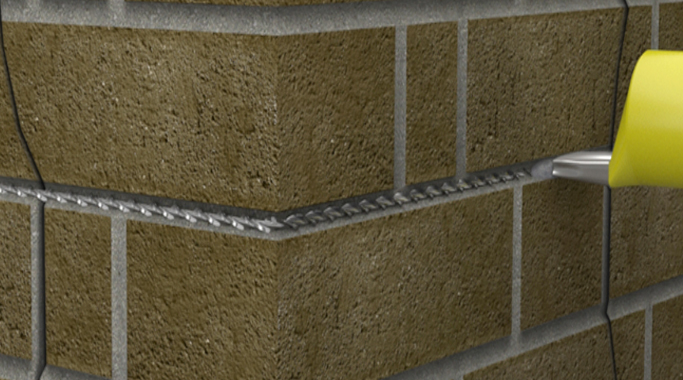
Reinforcing external corners with crack stitching bars
A series of helical bars, bent at a right angle, are bonded into slots with WHO-60 polymer modified grout. The bars form layers of concealed reinforcement for stitching cracks at a corner of a building, wrapping around the corner to improve buttressing.
Stitching cracks at a corner of a building with long drive pins
A series of long drive-in helical wall ties are driven from the corner of a building into both flanking walls to form a succession of perpendicular tie straps. The 12mm diameter ties corkscrew into small 8mm pilot holes when driven with the impact action from an SDS hammer drill. The tie grips the brickwork along the entire length of the helix to provide a tension strap that reconnects and strengthens masonry adjacent to the cracked corner.
Independent testing shows both the cracking bars and heavy-duty drive pins conform to BS EN 846-4:2002 ‘Methods of Test for Ancillary Components for Masonry – Part 4: Determination of load capacity and load-deflection characteristics of straps’. BS EN 845-1:2013 National Annex NA states that the strap needs to provide equivalent performance to 30mm x 5mm tension straps and that the fitted straps should have a tensile load capacity of at least 8kN. Thor Helical bed-joint reinforcement bars or the heavy-duty drive pins exceed this performance criterion when reinforcing external corners of brickwork.
Forming Masonry Beams
Thor Helical reinforcing bars can form deep masonry beams that strengthen existing walls. Two parallel layers of bed joint reinforcement, each layer containing a pair of helical bars, represent a brick beam’s upper and lower flanges. The deep masonry beams can span areas of masonry failure, redistribute applied loads, and enhance the wall’s tensile, shear, and flexural capacity. Non-reinforced masonry panels are strong in compression but comparatively weak in shear and tension loads resistance. Walls can deflect and crack when subjected to increased loads and stresses. Such stresses may be induced by; localised ground movement/ subsidence, lintel failure or moisture/ temperature variations. Reinforced masonry has greater resistance to shear and tension loads as ductile steel reinforcement enhances it.
Reinforced brick masonry can strengthen masonry wherever it has lost its load-bearing capacity. It is commonly used to span areas of localised ground movement to alleviate the need for partial underpinning. In other instances, it can span between concrete pads or piles to reduce the cost of subsidence repairs. Bed joint reinforcement can also span window openings, strap external corners, stitch cracks, increase resistance to wind loading, and extend the centres of movement joints. An engineer should establish span and applied-loading to design a retrofit system to form effective deep masonry beams in existing walls. Using load tables from the BRE report on creating reinforced brick beams using Thor Helical bars, the specifier can determine the vertical distance between each pair of bars to establish the depth of the beam.
Forming masonry beams with helical bars can form part of a more comprehensive masonry repair scheme, including additional lateral and vertical restraint reinforcement. For example, retrofit masonry reinforcement systems and other retrofitted products for tying walls add restraint by securing reinforced masonry to timber floors or reconnecting external walls to internal walls at weak junctions.
Helical Reinforcing Bars
- BRE report load tables for deep masonry beams
- Fully concealed masonry reinforcement for forming brick beam lintels
- Patented manufacturing process delivers consistency in tensile strength (1050-1200N/mm² band)
- Highly deformed helical bar combines with WHO-60 grout to produce an excellent bond within the wall
- Conforms to conditions for UKCA and CE marking according to BS EN 845-1 2013
- Mean tensile performance is greater than 8k/N at 400mm embedment
Repairing Brick Arch Lintels
Installing lengths of strategically placed Thor Helical bars above door and window openings is a quick and easy way of creating or repairing brick arch lintels in buildings. The high tensile stainless steel bars utilise existing brickwork to form a reinforced brick lintel over a flat soldier course or curved masonry arch. Lintel failure occurs for a variety of reasons. Shallow or flat brick arches can fail due to inadequate buttressing on either side of the arch, concrete lintels tend to rotate, whist timber and steel lintels may degrade over time as rot or corrosion sets in. It is not uncommon for old timber or steel window frame to form a fortuitous lintel, which helps to support the brickwork above. When replacing these load-bearing windows and doors with non-structural uPVC units, support from the fortuitous lintel is lost, and the masonry may begin to crack as the brickwork sags.
Thor Helical bars have a long history of reinforcing and repairing brick arch lintels over openings. A section of the mortar bed is cut out immediately above the existing arch or lintel, and another is cut out further up the wall. The slots extend at least 500mm on either side of the opening. WHO-60, a polymer-modified cement-based grout, bonds a pair of spiral bars into each channel. The grout cures rapidly to create reinforced layers representing a reinforced brick beam’s upper and lower flanges. The brick beam supports the masonry above and spreads the structural loads.
The Building Research Establishment has carried out independent testing on this brick lintel system. The BRE has issued a report on creating or repairing brick arch lintels in buildings using Thor Helical bars. The information includes load tables for the masonry beams given the width of the span and the depth of brickwork between the top and bottom layers of reinforcement. Where lintels sag, a user may supplement this method of strengthening and repairing brick arch lintels by introducing remedial pinning ties installed vertically up through the arch and into the reinforced zone of the masonry beam. Where cracks have appeared above an opening, shorter helical bars can stitch them, and crack-repair mortar or a low-viscosity epoxy resin can fill the fracture.
Benefits
- BRE report load tables
- Fully concealed masonry reinforcement for forming brick beam lintels
- Patented manufacturing process delivers consistency in tensile strength (1050-1200N/mm² band)
- Highly deformed helical bar combines with WHO-60 grout to produce an excellent bond within a wall
- Quick and easy to install
- Conforms to conditions for CE marking according to BS EN 845-1 2013
- Mean tensile performance is greater than 8k/N at 400mm embedment
Let’s Talk
Contact the Team at EBM
Contact us here for some friendly advice on how we can help you and your property

Fast and efficient service

Professional Workmanship

Industry Experts

Over 30 Years Experience

I had EBM carry out a lintel replacement and damp proofing. They were brilliant from start to finish. They were clear in their quotation, kept me informed on a start date, turned up on time and got the job done on schedule and took every care in keeping my house clean. I'd highly recommend EBM
Kevin Burke
I had EBM carry out a lintel replacement and damp proofing. They were brilliant from start to finish. They were clear in their quotation, kept me informed on a start date, turned up on time and got the job done on schedule and took every care in keeping my house clean. I'd highly recommend EBM
kevin_burke_98
Work is near completion. Chris and the guys have been brilliant - very considerate and hard-working. The job has taken a while due to the consistent rain we have had the last couple of months but Chris has kept in constant communication to update me on when work can continue. Highly recommend.
christine44085
Couldn't be happier with the work the team have done. So professional, friendly and have been amazingly flexible throughout the whole process despite a pandemic. Open, honest and always cleaned up. Would recommend anytime and will certainly be calling Chris again for future work
mrs23060
Send us a quick message today!
We’re always happy to help and advise, or offer some friendly advice

